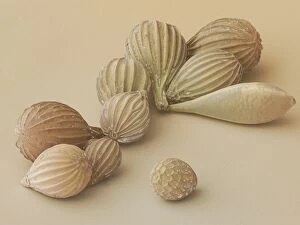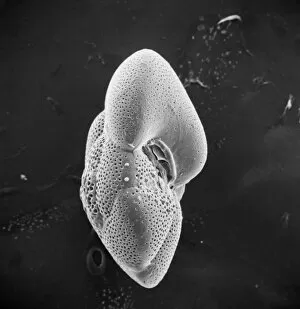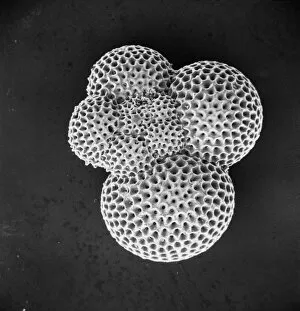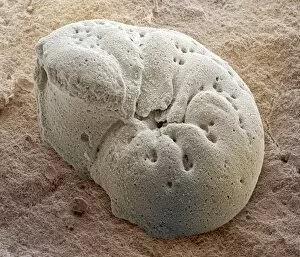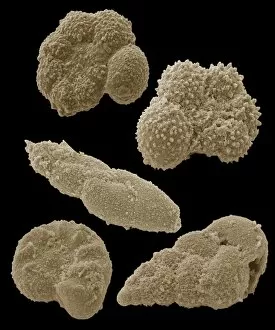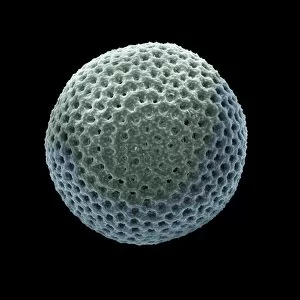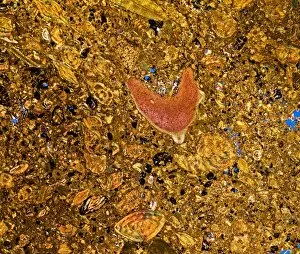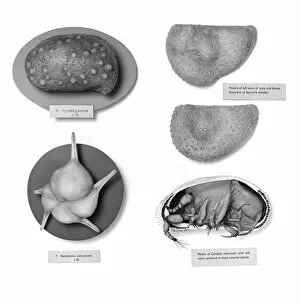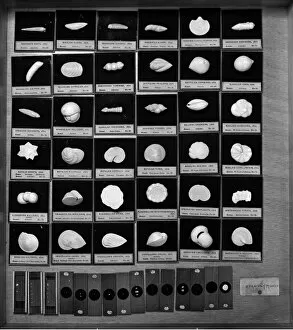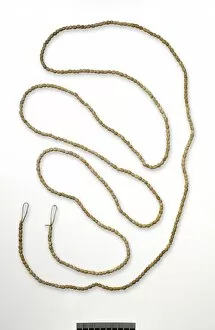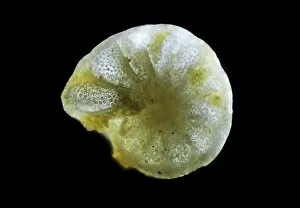Foraminiferan Collection
"Foraminiferan: Unveiling the Intricate World of Microscopic Shells" Delving into the microscopic realm, we encounter the fascinating world of foraminiferans
All Professionally Made to Order for Quick Shipping
"Foraminiferan: Unveiling the Intricate World of Microscopic Shells" Delving into the microscopic realm, we encounter the fascinating world of foraminiferans. These tiny marine organisms construct intricate shells known as tests, which serve as their protective homes. Through scanning electron microscopy (SEM), scientists have unraveled the mesmerizing details hidden within these structures. One such example is Bulimina, a genus that showcases its delicate test under SEM. The high-resolution images reveal an exquisite spiral pattern and minute perforations on its surface, highlighting nature's remarkable craftsmanship. To better understand these enigmatic creatures, researchers have also created models replicating foraminiferal tests. These accurate replicas provide valuable insights into their structural composition and aid in studying their ecological significance. Exploring further through SEM imaging, fossilized foraminiferans come to life before our eyes. Preserved over millions of years, these ancient specimens offer glimpses into Earth's past environments and evolution. The detailed illustrations capture the intricate beauty of each shell while shedding light on the diversity that once thrived in our oceans. The significance of foraminifera extends beyond scientific research; it has even inspired artistic creations like jewelry. Fossilized foraminiferans transformed into stunning necklaces showcase not only their aesthetic appeal but also symbolize a connection between ancient history and contemporary fashion. As we delve deeper into understanding this microcosmic world, every image captured by SEM or illustrated representation brings us closer to unraveling mysteries yet unknown about these incredible organisms' lives and contributions to Earth's geological record.

